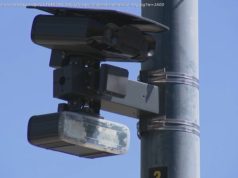 President Trump instituted a government-wide hiring freeze Monday, signing an executive order that would affect a large swath of the government but leave wide latitude for exemptions for those working in the military, national security and public safety.
President Trump instituted a government-wide hiring freeze Monday, signing an executive order that would affect a large swath of the government but leave wide latitude for exemptions for those working in the military, national security and public safety.
The move — coming on the new president’s first full working day in the White House — represents the opening salvo in what could be the most concerted effort to overhaul the federal workforce in 35 years.
Critiquing the Washington establishment was central to Trump’s campaign, and he placed federal employees at the center of his effort to “clean up corruption and special interest in Washington D. C.” His “Contract with the American Voter” listed a hiring freeze as a key element.
Trump’s executive order states that “no vacant positions existing at noon on Jan. 22, 2017, may be filled and no new positions may be created, except in limited circumstances” though it does not apply to military personnel.
“The head of any executive department or agency may exempt from the hiring freeze any positions that it deems necessary to meet national security or public safety responsibilities,” it reads, adding the head of the Office of Personnel Management can allow for hiring “where those exemptions are otherwise necessary.”
Speaking to reporters on Monday, White House press secretary Sean Spicer said there’s been “a lack of respect for taxpayer dollars in this town for a long time and I think what the president’s showing through the hiring freeze… that we’ve got to respect the American taxpayer.”
“Some people are working two, three jobs just to get by,” he added. “And to see money get wasted in Washington on a job that is duplicative is insulting to the hard work that they do to pay their taxes.”
Depending on how the “national security or public safety” exemptions are interpreted, according to New York University public service professor Paul Light, the freeze might affect fewer than 800,000 employees, which is less than a quarter of the overall federal workforce.
“Anyone who’s looking at 1600 Pennsylvania Avenue is looking in the wrong direction,” Light said. “The real action’s going to be on the Hill.”
Still, the move sparked an immediate outcry from federal employee union officials and some public service advocates.
“There’s real need for change in the federal government, and this is not the kind of change that’s constructive,” said Max Stier, president and chief executive of the Partnership for Public Service, in an interview. “You don’t freeze into place what is already not what you want.”
Richard G. Thissen, president of the National Active and Retired Federal Employees Association, noted that the federal workforce is now roughly 10 percent smaller than it was in 1967.
Thissen said the freeze “would undermine the efficiency of government operations by creating hiring backlogs and inadequate staffing levels, and it is unlikely to save any money,” he said. However, he added, it is likely to lead to the hiring of additional federal contractors.
The last two major, across-the-board freezes were instituted by Presidents Jimmy Carter and Ronald Reagan, who imposed them after taking office. In 1982, the General Accounting Office (now the Government Accountability Office) issued a report concluding that both freezes ended up costing more money than they saved and were “not an effective means of controlling federal employment.”
President George W. Bush imposed a hiring freeze in 2001, but it affected only selected agencies. Under President Barack Obama some agencies, including the Pentagon, imposed hiring freezes due to budget constraints.
House Government Reform and Oversight Committee Chairman Jason Chaffetz (R-Utah), who is hoping to enact broader civil service reforms that could make it easier to removew workers for misconduct and replace federal pensions with retirement plans often used in the private sector, said in an interview that he was “very supportive of freezing the net numbers of federal employees.”
But he said some agencies, including the U. S. Secret Service and those dealing with cybersecurity operations, had to be able to fill open positions.
“The president is obviously working to fulfill a campaign promise. I concur with the goal,” he said. “In terms of the details on the execution, we would love to work with him.”
Several lawmakers from both parties said hiring contractors to compensate for staff reductions, which happened in previous freezes, would be counterproductive. The order makes clear, however, “Contracting outside the Government to circumvent the intent of this memorandum shall not be permitted.”
Rachel Greszler, a senior policy analyst with the Heritage Foundation, said it made sense for Trump to impose an initial freeze so he can “evaluate things and see where the waste and inefficiencies are” in the federal government.
“He needs that time so that more federal employees don’t come onto the rolls, because it’s extremely difficult to fire federal employees,” Greszler said.
However Stier said there are real deficiencies in the federal government already, and a freeze will just exacerbate them. The government spends nearly 80 percent of its $90 billion IT budget on operations and maintenance, and there are nearly three times as many employees over age 60 as under age 30.
“That’s not the workforce you want to freeze; you want to refresh it,” he said.
During the final weeks of the Obama administration, top officials at several government agencies went on a hiring spree in an effort to staff up before the expected hiring freeze hit. This prompted a pushback from congressional Republicans, who argued that federal officials should wait to bring on any additional employees until after Trump took the oath of office.
[ Federal officials rush to hire before Trump takes office ]
There appears little legal recourse for those opposed to the executive order. Reagan’s freeze was retroactive to Election Day, and was unsuccessfully challenged in court.






